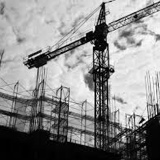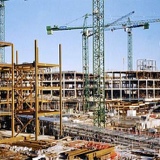Information
-
Document No.
-
Audit Title
-
Client / Site
-
Conducted on
-
Prepared by
-
Activities observed
1. Welfare
-
1.1 Are toilets readily available?
-
1.2 Are there washbasins with hot and cold running water, soap and towels?
-
1.3 Are washbasins of sufficient size to wash up to elbows?
-
1.4 Are welfare facilities clean and tidy and a regular cleaning regime in place?
-
1.5 Is a drying room available for those have work out doors or in the wet?
-
1.6 Is drinking water provided with suitable drinking cups?
-
1.7 Is a canteen or suitable place available for workers to prepare food and make hot drinks?
-
1.8 Have workers safe and easy access to and from the welfare facilities?
-
1.9 Are there adequate first aid provisions and sufficient first aiders on site?
-
1.10 Are all portable electrical equipment within the welfare facilities PAT tested?
2. Safety Management Procedures
-
2.1 Are all workers and visitors site inducted and evidence available in form of Construction Managers Induction Checklist?
-
2.2 Have emergency procedures been developed in case of evacuation from the site, site offices and welfare facilities?
-
2.3 Has a means of raising the alarm in case of an emergency being developed and does it work?
-
2.4 Are fire extinguishers, blankets, muster points and exit signage in place in case of an emergency?
-
2.5 Is a hot works permit system in place and is there documented evidence it is been adhered to?
-
2.6 Is a permit to excavate system in place and is there documented evidence it is been adhered to?
-
2.7 Are workers on site made aware of the emergency procedures within the site induction?
-
2.8 Is a signing in and out register in use and been used by visitors and contractors?
3. Site Safety Controls
-
3.1 Are the public and others fenced off or otherwise protected from the work?
-
3.2 Is the perimeter fencing secure and undamaged with secure lockable gates to prevent unauthorised access?
-
3.3 Are there sufficient health and safety warning signs in place (warning public construction in progress, directional signs to site office and first aid point, parking for visitors, site welfare facilities marked clearly identifiable)?
-
3.4 Are hazardous areas, plant etc adequately fenced off and signs indicating danger visible?
-
3.5 Have hearing protection zones been clearly marked were applicable?
-
3.6 Are fire exits and escape routes clear and unobstructed
4. Traffic Management (pedestrian & vehicular)
-
4.1 Is a Traffic Management Plan in place and is it up to date and sufficient?
-
4.2 Have adequate and separate pedestrian, vehicle access points and routes around the site been provided?
-
4.3 Has the need for reversing been minimised with a one-way system or turning points?
-
4.4 Where vehicles have to reverse are they controlled by a banks person?
-
4.5 Are facilities available for washing down vehicles (in particular tyres) in wet weather, especially on muddy sites?
5. Storage Areas
-
5.1 If flammable liquids and gases, e.g. LPG and acetylene are been used on site is there a separate and caged storage area?
-
5.2 Are containers and cylinders returned to these stores at the end of the shift?
-
5.3 Are materials stored and stacked safely without the danger of slipping, rolling, falling etc?
6. Working at Height
Pole and Clip Scaffolding
-
6.1 Have scaffolds been erected, altered and dismantled by competent persons and handed over with a certificate were applicable?
-
6.2 If scaffold requires designing has it been designed by a competent person?
-
6.3 Are all uprights provided with base plates (and, where necessary, timber sole plates)?
-
6.4 Are all uprights, ledgers, braces and struts in position and secure?
-
6.5 Is the scaffold secured to the building or structure in enough places to prevent collapse?
-
6.6 Are there double guardrails and toe boards, or other suitable protection, at every edge, to prevent falling?
-
6.7 Are brick guards provided were necessary?
-
6.8 Are working platforms fully boarded, and are the boards arranged to avoid tipping and tripping?
-
6.9 Are there effective controls or warning notices in place to stop people using incomplete scaffolds?
-
6.10 Are loads evenly distributed on scaffolds and is the scaffold strong enough to carry the weights?
-
6.11 Does a competent person inspect the scaffold regularly, e.g. at least once a week and always after it has been altered, damaged and following extreme weather?
-
6.12 Are results of the inspections recorded on scaffold tag or recorded on a register?
-
6.13 Are access ladders in good condition and secured to preventing slipping and rise sufficiently above landing height?
-
6.14 Are access ladders removed or boarded at the end of shift to prevent unauthorised access to scaffolds etc?
Tower Scaffolds
-
6.15 Have tower scaffolds erected, altered and dismantled by competent persons?
-
6.16 Have tower scaffolds erected and used as per the manufacturer instructions?
-
6.17 Have wheels of tower scaffolds been locked when in use and platforms empty when moved?
General
-
6.18 If step ladders and ladders been used are suitable and sufficient risk assessment in place?<br><br>
-
6.19 Is work off ladders and step ladders of short duration?
-
6.20 Have all fragile materials (such as cement sheet and roof lights) being identified and precautions taken to prevent access?
-
6.21 Are there enough barriers and other edge protection to stop people or materials falling?
-
6.22 Are people excluded from areas below height work with adequate signage in place? If exclusion is not possible have precautions been taken to stop objects falling onto them?
7. Site Management
-
7.1 Is the F10 notification up to date and displayed in a prominent place on site?
-
7.2 Do all current works have risk assessments and method statements in place and filed on site?
-
7.3 Is there evidence of a positive safety culture on the site?
-
7.4 Is Health and Safety Law poster displayed?
-
7.5 Is a health and safety notice board displayed in a position that can be read by all the workforce?
-
7.6 Is employer liability insurance displayed?
-
7.7 Are regular contractor coordination meetings held and minuted to prevent activities clashing?
-
7.8 Has an asbestos survey been carried out in accordance with HSG264?
8. Plant & Equipment
-
8.1 Are all operators of plant and equipment trained and competent and are copies of training certificates available for inspection?
-
8.2 Is all plant and equipment maintained and in good condition?
-
8.3 Are certificates of conformity available and held on site?
-
8.4 Has all electrical equipment been PAT tested and within date?
-
8.5 Are all dangerous parts of plant and equipment guarded, e.g exposed gears, chain drives, protecting engine shafts?
-
8.6 Are guards secured and in good repair?
9. Cranes and Lifting Appliances
-
9.1 Are cranes & MEWP's operating on a firm and level base?
-
9.2 Have risk assessments been carried out prior to lifts taking place (including chain and block etc)?
-
9.3 Has a safe system of work been established and effectively communicated to all those involved?
-
9.4 Is there an appointed person for lifting operations and are they adequately trained and competent?
-
9.5 Are all necessary tests, inspections, examinations and maintenance been carried out and recorded on the lifting equipment?
-
9.6 Are all lifting appliances clearly marked with the Safe Working Load (SWL)?
-
9.7 Are crane operators trained and competent and is there evidence on site to confirm this?
-
9.8 Are lifting slings etc in good condition and tagged indicating current status?
10. General Site Works
-
10.1 Is the working environment satisfactory (in relation to ventilation, temperature, lighting, noise, dust and fumes)?
-
10.2 Are holes and openings securely guard railed, provided with an equivalent standard of edge protection or provided with fixed, clearly marked covers to prevent falls?
-
10.3 Has the risk of manual handling injuries been assessed by use of risk assessments and works method statements?
-
10.4 Are excavations adequately supported, or been sloped or battered back to a safe angle?
-
10.5 Is there safe access into the excavation, e.g a sufficiently long and secured ladder?
-
10.6 Is the excavation safe and not affecting the stability of neighbouring structures or services?
-
10.7 Are there barriers or other protection to stop people and vehicles falling in?
-
10.8 Is the excavation regularly inspected by a competent person and details of that inspection recorded?
11. Personal Protective Equipment
-
11.1 Has adequate PPE been provided to the workforce?
-
11.2 Are all operatives wearing the minimum PPE - hardhat, safety boots and high visibility vests or jackets?
-
11.3 Is the PPE equipment in use in good condition and readily available?
-
11.4 Is hearing protection being used were necessary?
-
11.5 Are dust masks being used in dusty environments and adequate for the work and conditions?
12. Training
-
12.1 Are tool-box talks encouraged and taking place on a regular basis with evidence of attendance?
-
12.2 Have workers been informed of any hazardous substances or materials etc on site (including vermin and the associated risks)?
-
12.3 Are training certificates of key personnel (plant operators, scaffolders etc) available on site for inspection?
13. House Keeping
-
13.1 Is the site generally tidy and rubbish removed on regular basis?
-
13.2 Are nails in timber removed or bent over and left safe?
-
13.3 Are pedestrian routes and walkways clear and unobstructed?
-
13.4 Are work areas kept clean and tidy and contractors etc taking responsibility for there own waste?
-
13.5 Are adequate bins or skips provided for storing waste?
-
13.6 Is flammable and combustible waste removed regularly from site and not allowed to accumulate?
14. Environmental
-
14.1 Are spill kits available adjacent to stored oils/chemicals etc?
-
14.2 Are all waste carriers licensed and copies of transfer note records kept/filed on site?
-
14.3 If invasive plant species are on site are the precautions adequate?









